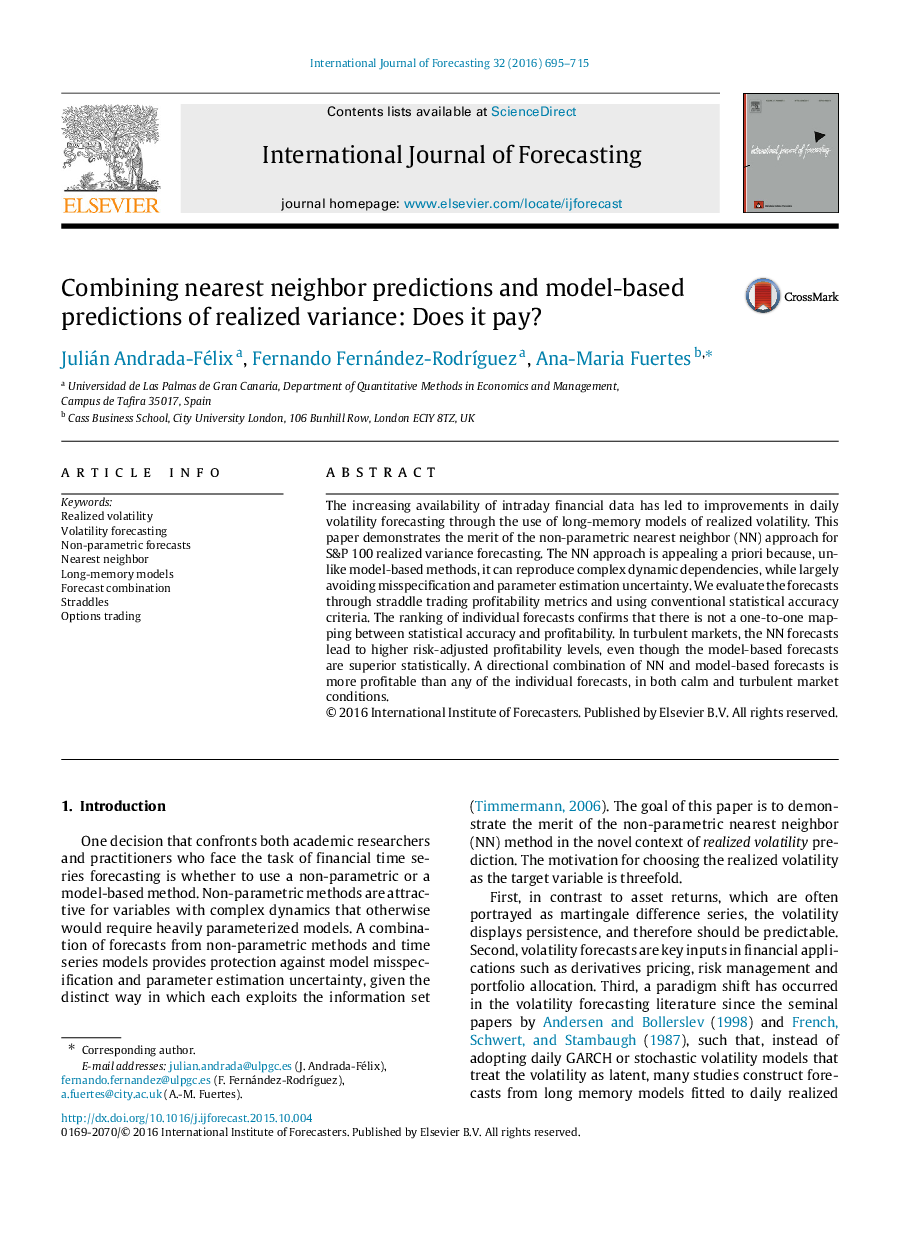| Article ID | Journal | Published Year | Pages | File Type |
|---|---|---|---|---|
| 7408157 | International Journal of Forecasting | 2016 | 21 Pages |
Abstract
The increasing availability of intraday financial data has led to improvements in daily volatility forecasting through the use of long-memory models of realized volatility. This paper demonstrates the merit of the non-parametric nearest neighbor (NN) approach for S&P 100 realized variance forecasting. The NN approach is appealing a priori because, unlike model-based methods, it can reproduce complex dynamic dependencies, while largely avoiding misspecification and parameter estimation uncertainty. We evaluate the forecasts through straddle trading profitability metrics and using conventional statistical accuracy criteria. The ranking of individual forecasts confirms that there is not a one-to-one mapping between statistical accuracy and profitability. In turbulent markets, the NN forecasts lead to higher risk-adjusted profitability levels, even though the model-based forecasts are superior statistically. A directional combination of NN and model-based forecasts is more profitable than any of the individual forecasts, in both calm and turbulent market conditions.
Keywords
Related Topics
Social Sciences and Humanities
Business, Management and Accounting
Business and International Management
Authors
Julián Andrada-Félix, Fernando Fernández-RodrÃguez, Ana-Maria Fuertes,
